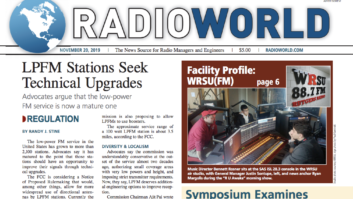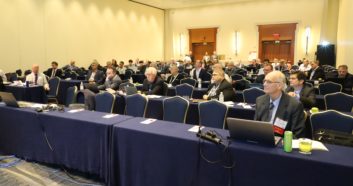
Convening for the 69th time in as many years, this year’s IEEE Broadcast Technology Society’s annual fall Symposium brought together some 120 engineering personnel from as far away as Japan and South Korea to exchange information about developments in disseminating information and entertainment to mass audiences.
Although the ATSC 3.0 and 5G rollouts got the lion’s share of attention this year, contemporary radio technology and issues were visible, with presentations ranging from IP connectivity to network security, remote monitoring, emergency alerting and regulatory matters.
Frank Foti led off presentations on a day of the conference devoted primarily to radio, with an update on the initiative by the Telos Alliance to assist broadcasters in moving to all-IP transport platforms.
[Read: The Value of Standards]
“I just recently finished up some pretty cool research work that I want to share that ties in with (the transport of) the FM multiplex signal,” said Foti. “Moving from multiplex over AES 67 to IP is a natural progression, and (this) technology slashes the amount of bandwidth needed for distribution by nearly 84 percent to a remarkable 320 kbps. It’s a remarkably efficient payload.”
Foti said that the µMPX technology was designed for FM transmission applications and was devoid of traditional psychoacoustic artifacts, with those that were generated being masked by the FM reception process. He also noted that by using the technology, which supports the embedding of the pilot, FM broadcasters could gain 1 dB greater loudness in their signals.
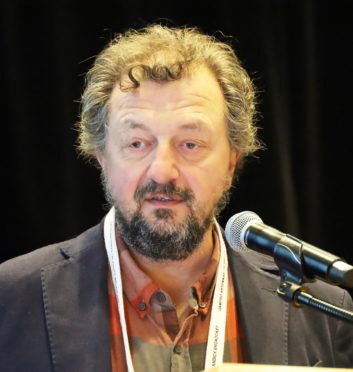
“In this system we’re embedding the pilot instead of adding it. The equivalent would be modulating at 110 percent to get that added loudness. With this technology we’re able to get that 1 dB loudness legally. I’m not up here to (push) loudness, but we live in a competitive world. This is dense audio; you shift it 1 dB and the program director says ‘Wow’! In an age where broadcasters are fighting in every way to retain listeners, I think added loudness is a benefit to the industry.”
MP11
The NAB’s David Layer teamed with Xperi’s Harry Chalmers to provide a report on testing of a high bitrate (100 kbps core and 48 kbps non-core) HD Radio operating mode that was defined in the NRSC-5 IBOC standard but had not been tested until now.
Layer noted that the testing was a cooperative effort of Xperi, Nautel and NAB Pilot, and utilized the Pilot radio test bed set up at the Cavell, Mertz & Associates offices in Manassas, Va.
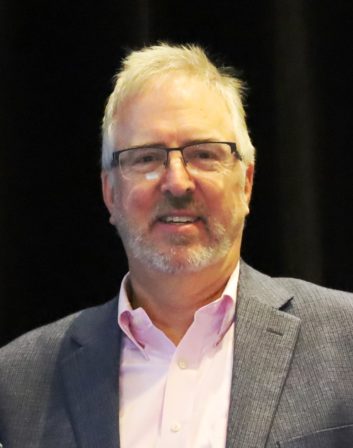
As explained by Layer, this MP11 mode accommodates hybrid analog/digital broadcasting and operates within the same RF bandwidth (193.3 kHz) as the established MP3 transmission mode.
“We needed to characterize the performance of MP11 before it’s supported by manufacturers of receivers and transmission equipment,” said Layer. “The first five modes of FM HD radio have always been supported, but there was no software written for this sixth mode (MP11).”
The main objectives of testing were to determine the impact of the MP11 digital sidebands on the mainstream FM analog audio signal and the RDS component, as well as the possible effect of the analog FM signal on MP11 digital sidebands.
[BTS Explores Tech’s Role in Content Wars]
Layer said that part of the testing involved using real-world program formats (including classical, country, urban and others) in addition to periods of silence (no modulation) and discrete tones (for measuring signal-to-noise ratio). The testing utilized six different FM receivers (a mix of analog-only and HD Radio-capable) and compared performance of the MP11 mode with established MP1 (no extended sidebands) and MP3 (some extended sidebands) modes of operation.
Chalmers revealed that the signal-to-noise performance of one of the receivers used was inconsistent with that of the others, and that the analog-only receivers involved were most affected by the MP11 signal.
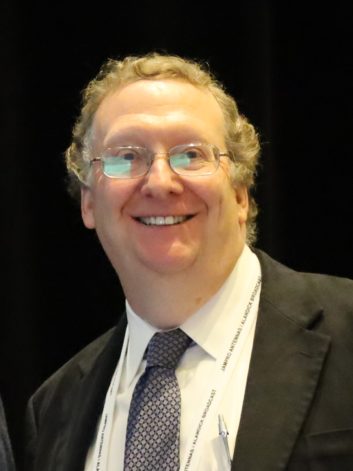
“We spoke with the manufacturers, and they said that this was correctable,” he said.
Layer said that in listening tests, any differences in analog component performance that might have been caused by the MP11 component were not noticeable, and that the study to determine effects of the analog FM signal on the MP11 signal was equally encouraging.
“The results were quite positive,” he said, adding that iHeartMedia is now doing some field testing, with station WTUE in Dayton, Ohio, acting as host.
Alan Jurison, senior operations engineer, engineering and systems integration with iHeartMedia and chair of this IEEE Broadcast Symposium session, said that iHeartMedia “did a driving test from Cincinnati to Dayton and the results were good. At the time of the symposium, WTUE has been operating (with MP11) for some 90 days and there have been no listener or automobile manufacturer complaints.”
Chalmers added, “As a result of this study, Xperi is planning to commercialize this technology. We’re now including MP11 in all chip uploads that we give to manufacturers.”\
AM PROTECTION CONTOURS
In the conference devoted to regulatory matters, the FCC’s 2018 Second Further Notice of Proposed Rule Making (NPRM) addressing “revitalization” of the AM broadcast band came under the spotlight, with a report by Tom Jones of the Carl T. Jones Corp. consulting firm.
He said that this second NPRM focused on changes to protection contours of existing Class A 50 kW stations, and would affect their protected operating contours during all operating modes (daytime, critical hours and nighttime), and reported that a large amount of feedback had been received during the comment period.
“Numerous thoughtful and informative comments were received in response to this ‘Second Further Notice,’ both in support of, and in opposition to, the proposed changes in interference protection afforded to Class A stations.” He said the most complete technical comments opposing the rule changes had come from a group called the AM Radio Preservation Alliance, and the most technical comments had been filed by several engineering consulting firms.
[Upgrading an AM to All-Digital: Why, How and Lessons Learned]
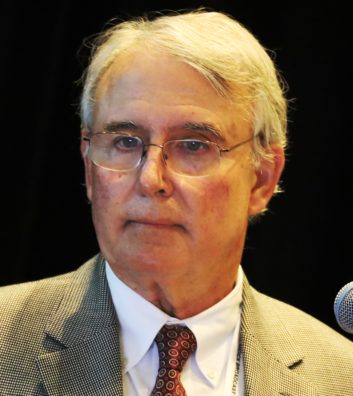
Jones presented a list of the various pros and cons offered by the two dissenting groups, which include “adoption of the proposed change to the daytime contour for Class A stations would potentially allow other Class B and D stations on the channel to substantially increase their daytime power and thus better serve their communities” and “failure to protect a Class A AM station’s 0.1 mV/m daytime groundwave contour would eliminate massive amounts of current AM service, while only resulting in modest gains for non-Class A stations.”
He said that some of the strongest comments opposing the rule change came from the Federal Emergency Management Agency. FEMA said that such changes would “decimate the system developed and funded by FEMA, under the mandate of Congress, for a robust communications distribution network (allowing U.S. citizens to receive) under all conditions, a presidential message in time of national emergency.”
FEMA added that millions of dollars had been invested on this network, “which is reliant on skywave signal coverage by Class A AM stations.”
Jones said, “I would advise anyone interested to review these comments, which are on the FCC’s website.” If the changes were to be enacted, “the tradeoff is pushing noise away from your transmitter while creating interference elsewhere.”







